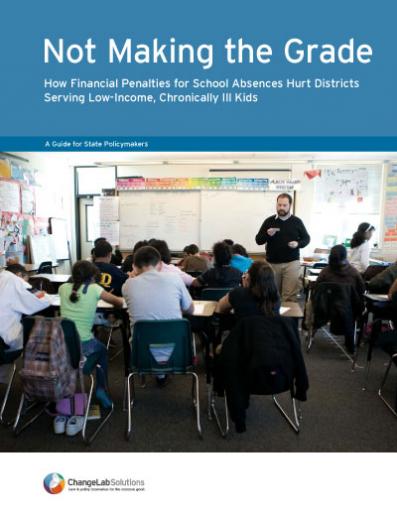Not Making the Grade
How financial penalties for school absences hurt districts serving low-income, chronically ill kids
When average daily attendance (ADA) is used as a factor to determine funding levels for school districts, the districts that serve low-income and chronically ill children are placed at a significant disadvantage compared to districts serving wealthier, healthier children.
By reducing state aid to schools on the basis of student absences, states are disproportionately (and substantially) penalizing schools that serve children from lower-income families—children who are far more likely to suffer childhood obesity, asthma, and other chronic diseases; and far more likely to be absent from school as a result.
ChangeLab Solutions developed two complementary guides for policymakers, advocates, and stakeholders; these guides describe how ADA-based funding hurts school districts serving poorer children and help localities in states with attendance-based measures support student health and academic success.
- Not Making the Grade aims to shed light on the hazards of employing average daily attendance measures as a basis for school district financing and to increase state policymakers’ awareness of how ADA-based funding formulas penalize a state’s most vulnerable districts.
- Improving the Grade provides local policymakers with an overview of the different student enrollment count methods can be used to determine school financing, illustrates how chronic health conditions influence student attendance, and presents recommendations for local actions that can mitigate the impact.



